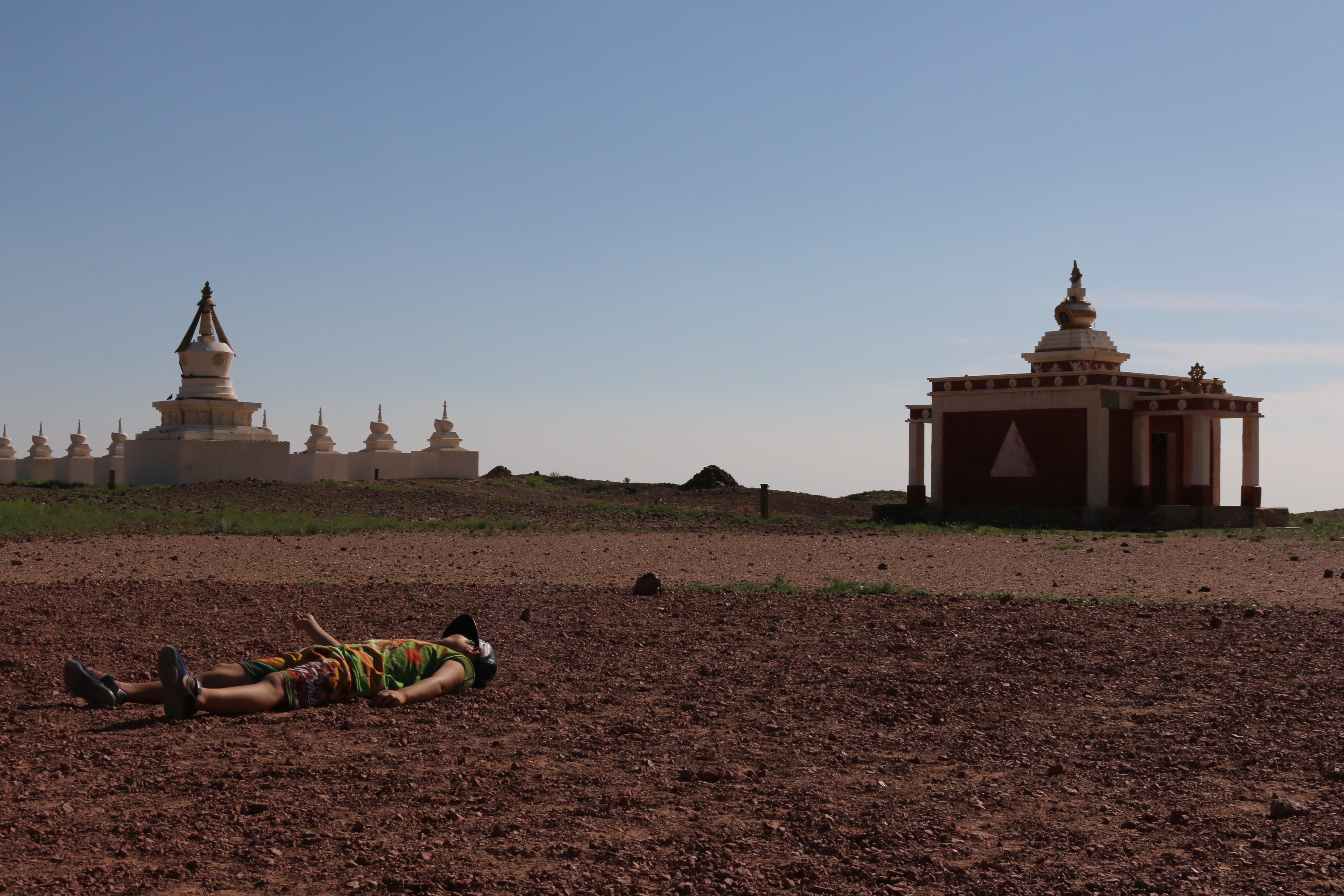Request A Car Rental
Travelling to Mongolia and need a car rental plus extra equipments?
The Gobi Desert is one of the most beautiful places in the world, let alone Mongolia, and it almost takes half of the country. You will have the opportunity to ride camels and horses through the sand dunes, setup camps in the vast desert and stay overnight in the wilderness. Also, you will explore interesting rock formations, barren mountains, sand dunes, endless steppes and flaming cliffs. The sightseeing will keep you motivated during your journey through the stunning yet challenging desert. The weather conditions are extremely different between northern and southern parts of Mongolia and it varies from 0° C up to 40° C.
National Parks in the Gobi desert
Gobi Gurvansaikhan National Park
Gobi Gurvansaikhan National Park consists of Gurvansaikhan (Three Beauties) massif including Baruunsaikhan, Dundsaikhan, Zuunsaikhan mountains. This national park has diverse and stunning nature and you can explore famous attractions such as Yol Valley, Khongor Sand Dunes, Khermen Tsav etc. Dinosaur fossils often found in the area, it is a home to rare animals including argali sheep, Siberian ibex, snow leopard, beech marten, manul cat, lynx, and Gobi camel.
Ikh Bogd National Park
Ikh Bogd is the tallest mountain of the Gobi-Altai mountain range with its height reaching 3957 meters. Although located in Gobi desert, this mountain shows great diversity with natural composition and has rich fauna and flora. You can experience all 4 seasons at the mountain in same day as it snows on top, rains downhill, heats over 30 degrees in the foothill. Also there’s two beautiful lakes created by earthquake that draws travelers’ attraction.
Places to visit
Khongor Sand Dunes
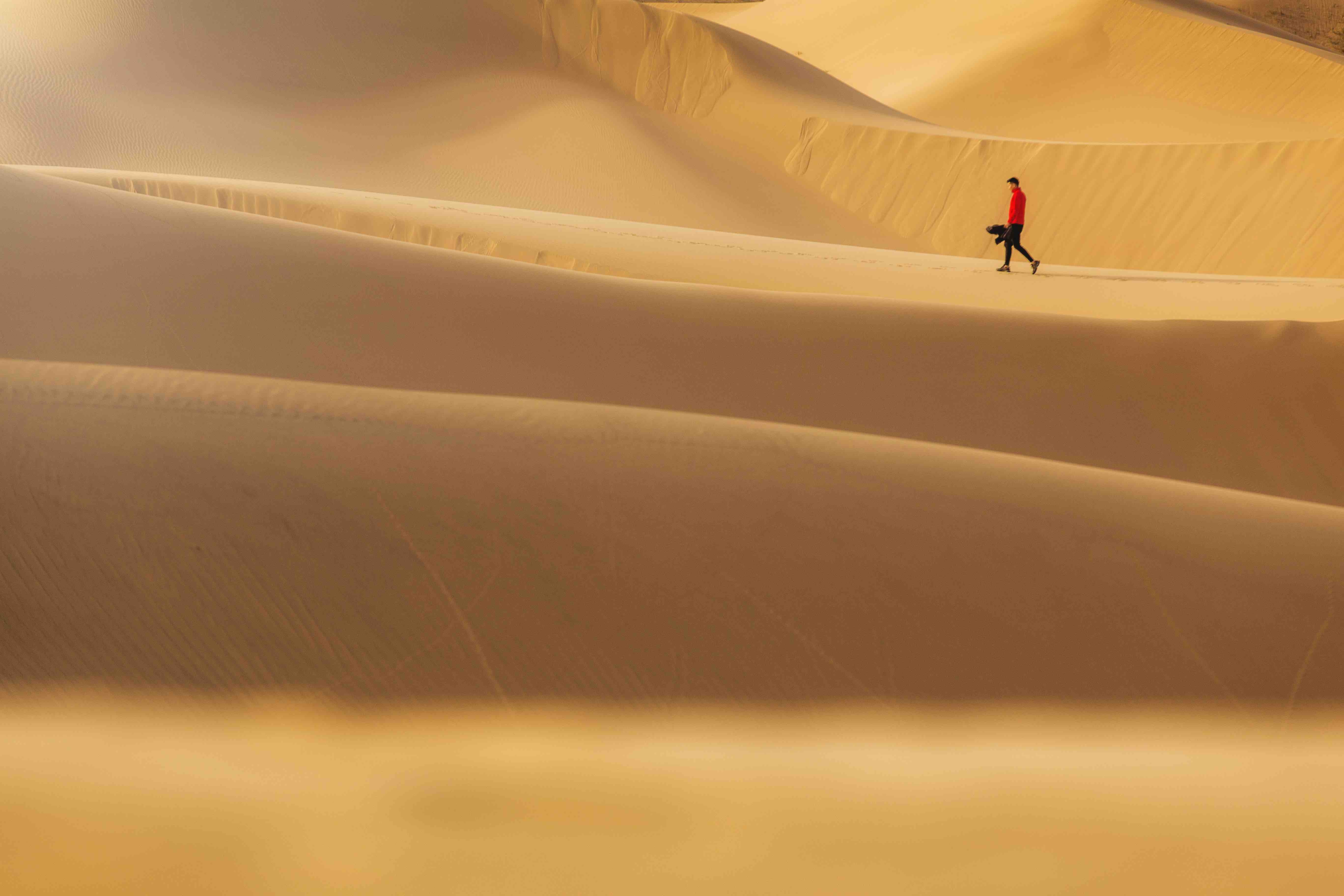
Located in Sevrei and Bayandalai soum of Omnogovi province, Khongor Sand Dunes stretches 185km across the gobi desert and covers 925 square km. These sand dunes have beautiful oasis formed by Khongor River, Seruun Bulag and Arganga Bulag brooks. Besides its gorgeous view, you can hear a sound that sand makes in the dunes, which gave a name “Singing Sands” to Khongor Sand Dunes. And what better way there is to experience the Gobi Desert than riding through the Egyptian-like sand dunes with ever-changing attractive curves on a camelback?
How to get there: Khongor Sand Dunes are relatively easy to drive to with a good 4x4 from Dalanzadgad. It is also possible to drive via the Yol Valley or from Bayanzac Flaming Cliffs on longer unpaved tracks.
More information and location details on this page about Khongryn Els.
Yol Valley
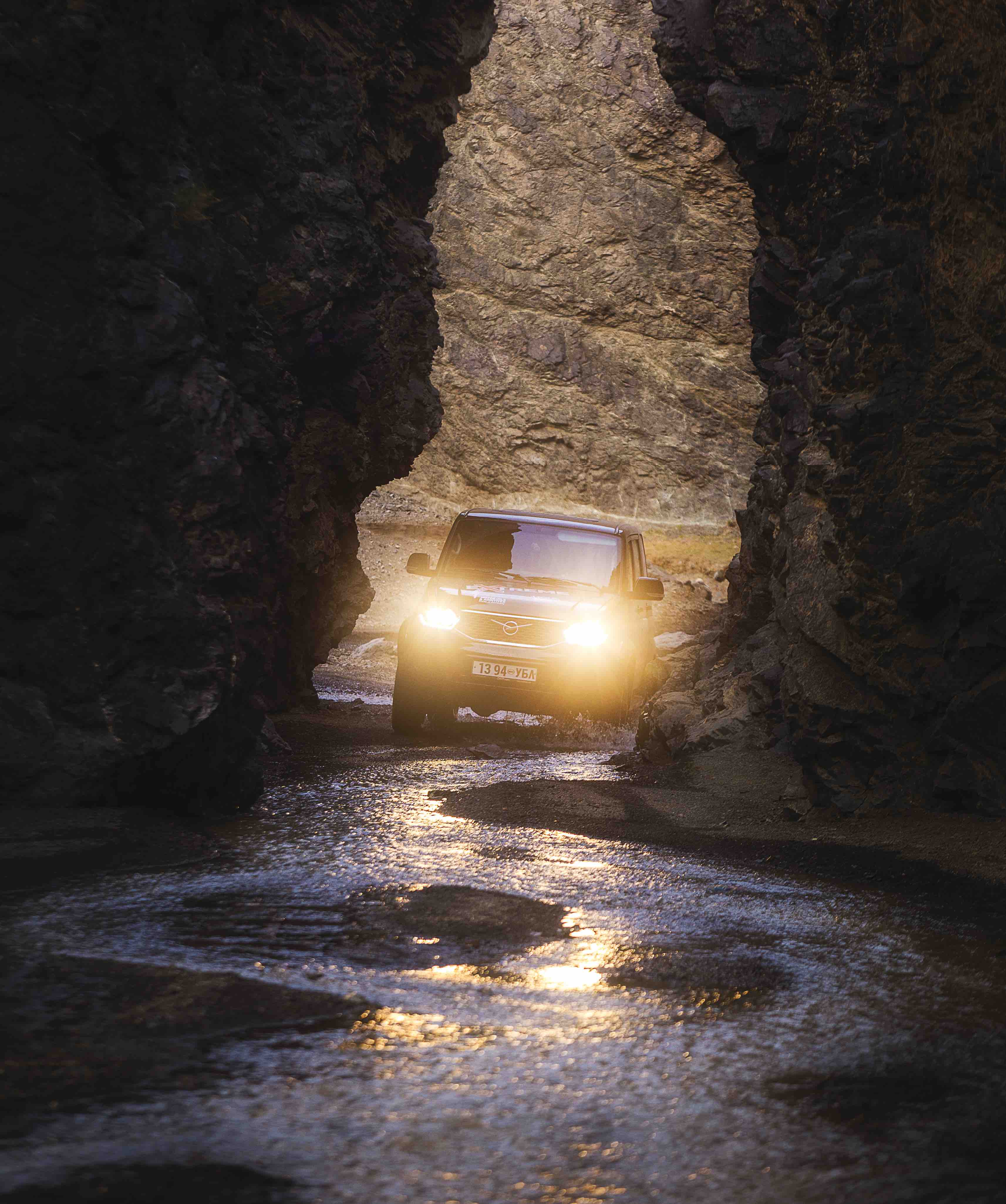
Yol Valley or Yoliin Am (Bearded Vulture Valley), you can discover permanent glaciers, endemic plants and rare animals such as bearded vultures, snow leopards, manul cat, beech marten, and mongolian antelope. This deep and narrow gorge can be found in the Zuunsaikhan Mountain. The scenery here is beautiful as this mysterious green valley with cool wind blowing through it found right in the middle of hot desert makes you think as if you’re just walked into a magical land.
How to get there: Yoliin Am is easy to drive to with a good 4x4 from Dalanzadgad.
More information and location details on this page about Yoliin Am.
Bayanzag / Flaming Cliffs
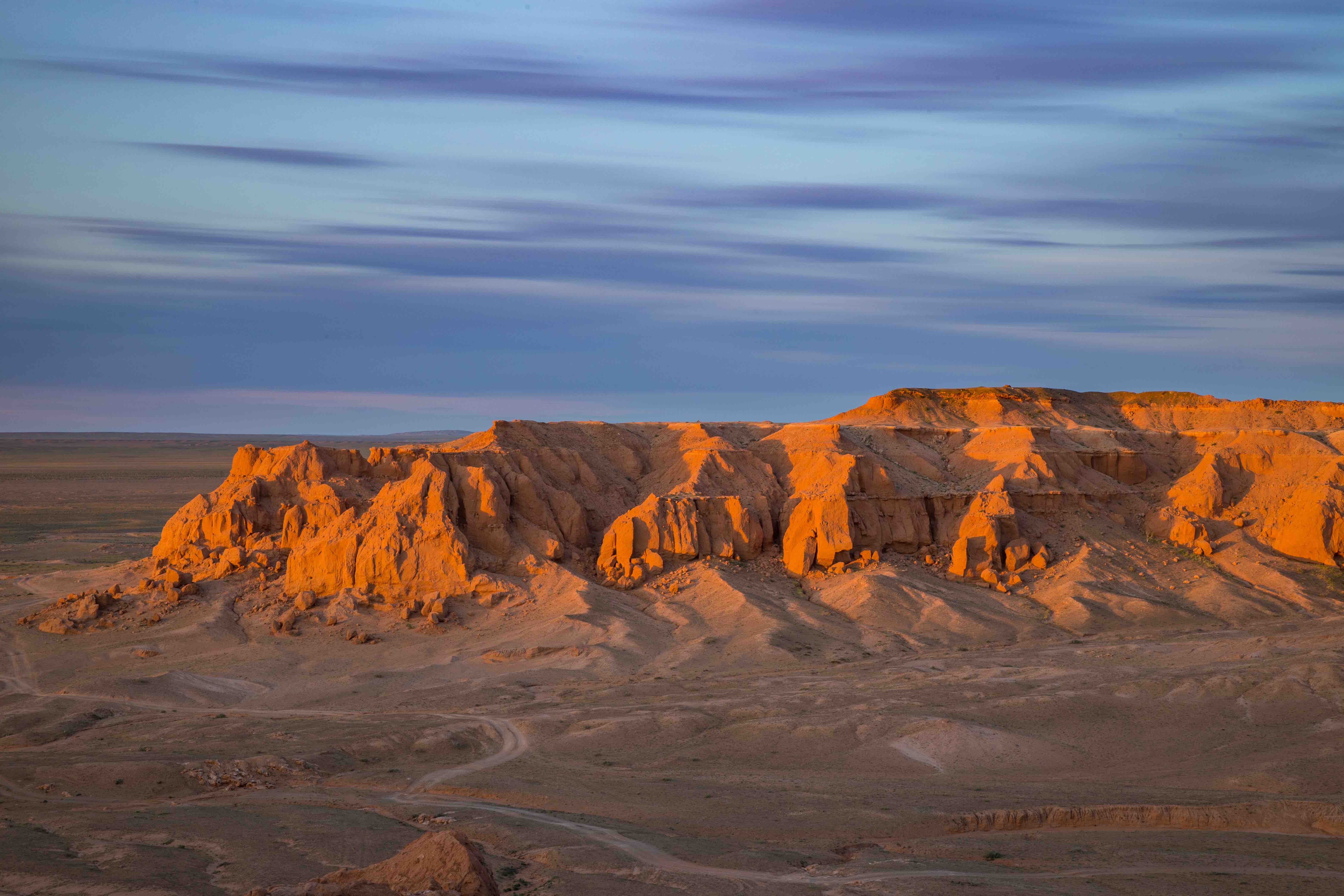
Bayanzag Red Sand Cliffs or Flaming Cliffs is a famous site situated near Arts Bogd mountain range in Omnogovi province. Well known in the paleontology world, this area is where the first dinosaur eggs were discovered. Bayanzag Red Sand Cliffs is full of dinosaur fossils and other findings include Velociraptor, Oviraptor, Protoceratops and Pinacosaurus fossil. Even if you’re not a dinosaur enthusiast, the bizarre beauty of the surrounding landscape warrants a visit. Better suited for camping, this area is for outdoor lovers besides paleontologists. Also, to the north of the cliffs there is a saxual forest where scientists are still discovering some findings of Upper Paleolithic (Old Stone Age) people. Regarding the name, Flaming Cliffs, the cliffs look like it’s burning when the sun falls thanks to the glowing reddish tint in the soil.
How to get there: Bayanzac Flaming Cliffs is a few kilometers offroad from Bulagan Bulag. The small town is between Mandal Ovoo and Dalanzadgad.
More information and location details on this page about the Flaming Cliffs.
Khermen Tsav Canyon
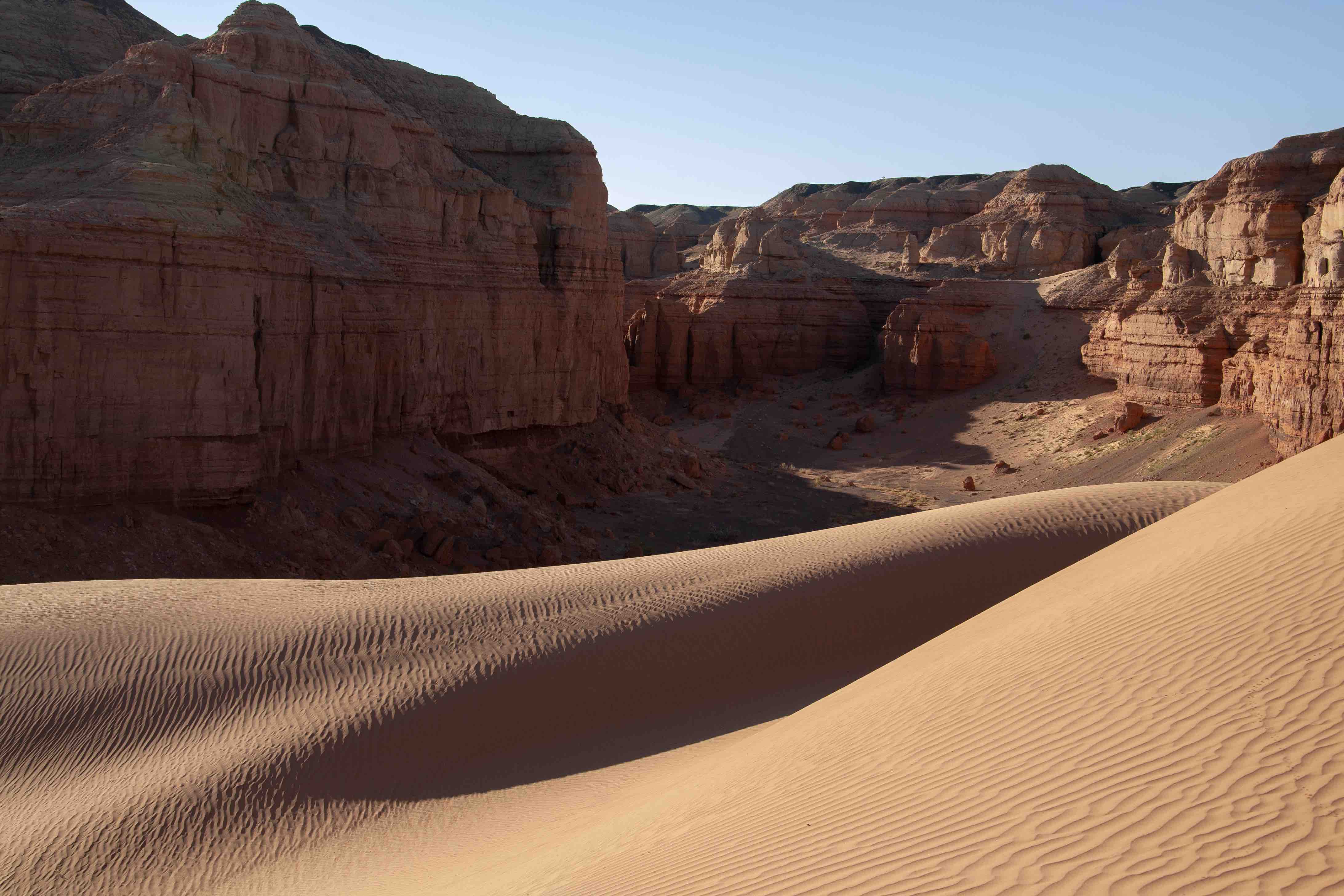
Khermen Tsav (Wall Fissure) holds more of a paleontological value as the first dinosaur skeleton discovered in Mongolia was found from here. Scientists suggest 200 million years ago, this place was bottom of the ocean and throughout history a lot of different types of species other than dinosaurs inhabited the area and fossils from those mammals, birds and aquatic life have been found too. But do not mistake, the landscape itself is not to be sniffed at. The view is spectacular to gaze at and these canyons made of red mud rocks are just as valuable as what it holds underneath it. Located in Gurvantes soum of Omnogovi province, Khermen Tsav precipice stretches 10 km across the gobi desert and covers 250 square km.
How to get there: Khermen Tsav is far away from any village and requires long offroad driving across difficult sandy terrain. A good 4x4 with extra fuel cans and self recovery gear is required. We advise to travel to Khermen Tsav only within a guided tour.
More information and location details on this page about Khermen Tsav
Khamaryn Khiid Energy Center
Visit the Energy Center, otherwise known as Shambhala, early in the morning. Because locals believe it is best to enter the Energy Center right as the sun rises. Surrounded by 108 stupas, this site not only charges you with energy, it also gives a relaxing vibe. Also, there are meditation caves around the area as well as well-known Muumun Khad (Breast Rock). But only women are allowed to visit and pray to the Breast Rock. Meanwhile there’s a mountain called Bayanzurkh, 23km to northwest of the monastery, which is believed to grant wishes, only this time women are not allowed at the peak. After exploring around the area, pay a visit to Khamar Monastery, founded by Danzanravjaa, who had the biggest cultural influence back in 19th century. The monastery complex contained a public library, a museum, a theatre, and a school for children which provided non-religious education.
How to get there: The Energy Center is close to the town of Sainshand which is accessible by a good paved road from Ulaanbaatar and is a train station along the tracks of the Trans Siberian Railway.
Tsagaan Suvarga / White Stupa
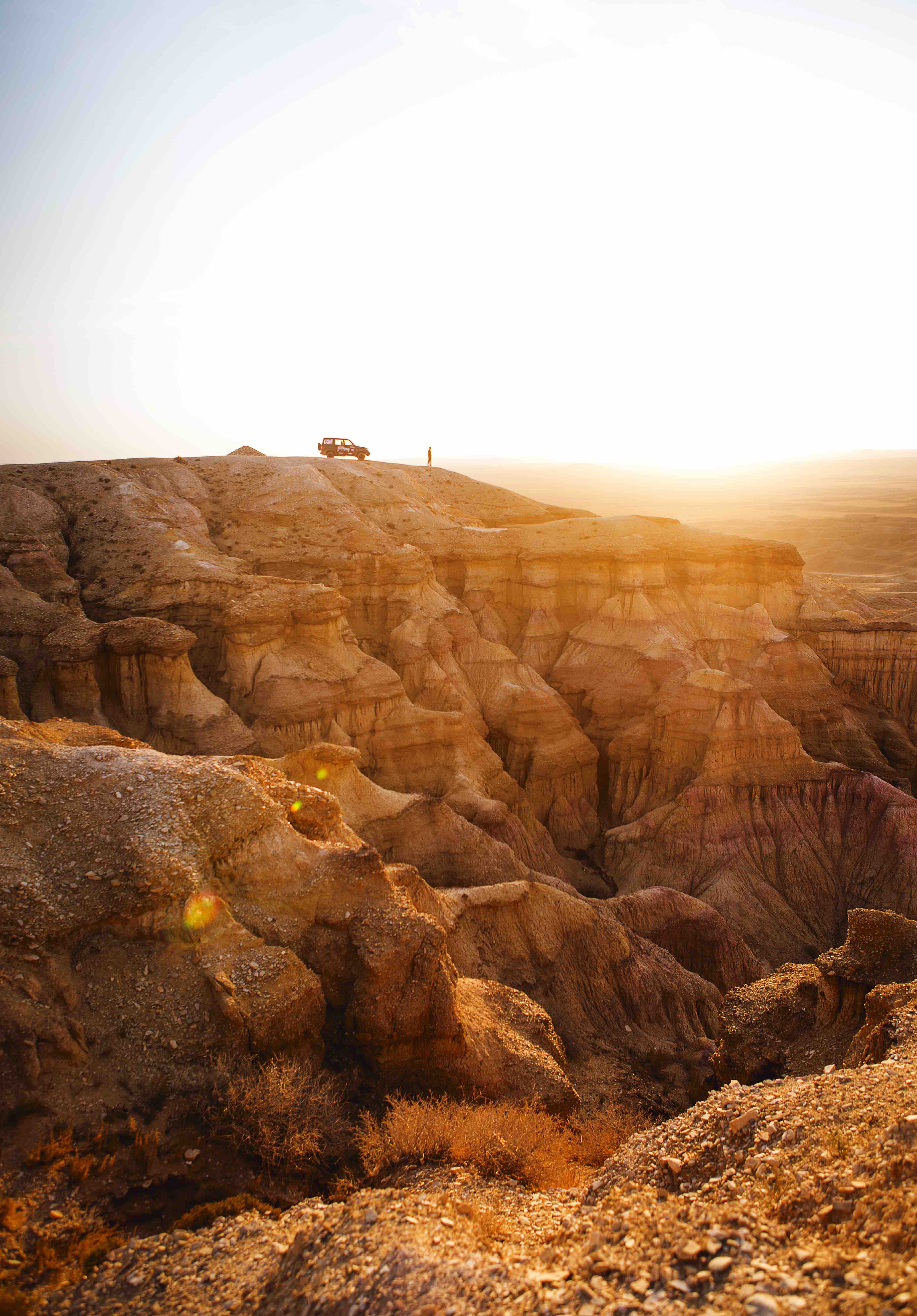
Tsagaan Suvarga is an arduous scarp in Olziit soum of Dundgovi province. Once a floor of the ocean, this scarp looks like a white stupa, hence the name Tsagaan Suvarga (white stupa). This scarp is 400 meters long and 60 meters tall with a 90 degree brink. After a rain, the water pouring down the scarp makes it look like a huge waterfall. There’s an interesting cave 7 km to the east of Tsagaan Suvarga named Hevtee Bosoo Agui. In this 50 meters long cave, you have to crawl at some point but will be able to walk normally in other parts of the cave, hence the name Hevtee Bosoo Agui (Laying Standing Cave).
How to get there: The White Stupa is relatively easy to drive to with a good 4x4. It is located close to Tsogt-Ovoo along the main road from Ulaanbaatar to Dalanzadgad.
More information and location details on this page about the White Stupa.
Activities in the Gobi desert
Besides all the sightseeing, there are a lot of activities you can do when you are traveling to the Gobi desert. To optimize the ultimate Gobi experience, try the following activities:
- Mongolia is famous for its Bactrian camels. So accordingly, camelback riding through the sand dunes is a must when it comes to visiting the Gobi desert.
- Locals strongly believe the Khamaryn Khiid is an energy center of the world. Try chakra healing and energy cleansing at Khamaryn Khiid.
- As stated before, Yol Valley is stunningly beautiful and refreshing, considering it is right in the middle of the hot and dry Gobi desert. Hiking through the cool valley is an activity you do not want to miss.
- There are some places you cannot reach with a vehicle. In that case, we suggest you to ride a horse to get to those places. Because, one, it is too far to walk there. Two, even if it is close enough to hike, why choose a boring walk when you can do horseback riding like a real Mongolian nomad?
- If you are planning to take a road trip around the Gobi, it takes quite a few days to complete it. Use this chance to camp outside under the clear blue sky. Read more about it in our Camping Guide.
- Did you know that camel herders use a special technique to console camel cows? Sometimes, when a camel cow gives birth to a calf she rejects her offspring due to various stress related reasons. And when that happens a Morin Khuurch will play a song called “Khoosloh” to relieve the stress. Watching camel cow consoling via Morin Khuur melody is truly a unique experience you cannot find anywhere else in the world. The famous docu drama movie "The Story of the Weeping Camel" is about this unique ritual.
- During your trip you can take a break from camping and stay with a local family inside Ger instead. The Gobi people are known for their hospitality and it will give grant you a deep look into their lifestyle.
- The beauty of the Gobi desert is too precious to just save inside your memory. So of course you want to capture it on your camera as images or a video. Check out the online photography tutorials from the famous german landscape photographer @muenchmax that was filmed in the Gobi or follow his paths on a self drive trip with FollowTheTracks. Max is already hosting a mentorship tour twice a year for 9 selected participants.
- The Gobi is an offroad paradise with only a few paved roads. Sand tracks, gravel and a lot more challenges guarantee a fun self-drive experience in this unique environment. Rent a car from SIXT and experience it yourself!
Wildlife in Gobi
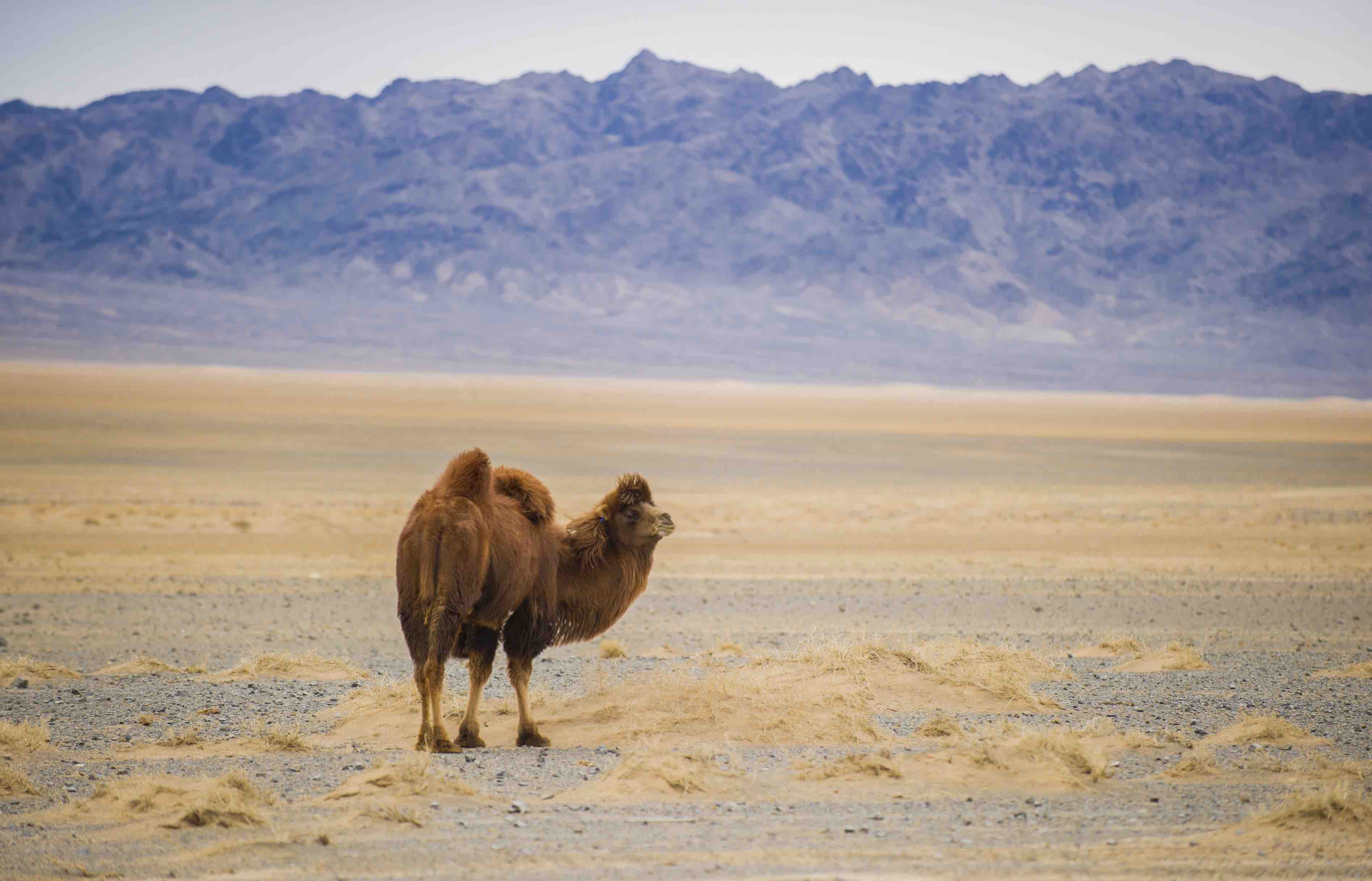
Because of the harsh environment of the Gobi desert, the fauna here is not much diverse. The most of the animals occupying the Gobi desert are well adapted to their surroundings. Also, the animals are scarce due to the fact that they have vast territories. Species include jerboa, gobi pit viper, wild Bactrian camel, golden eagle, Mongolian wild ass, gobi ibex, marbled polecat, black-tailed gazelle, gobi bear (mazaalai) and snow leopard. As for flora, there is not much to talk about as you have already guessed. However you can find the iconic Gobi plants such as Saxaul, wild onions, bindweed, saltwort and sophora here and there across the desert.
Culture in Gobi
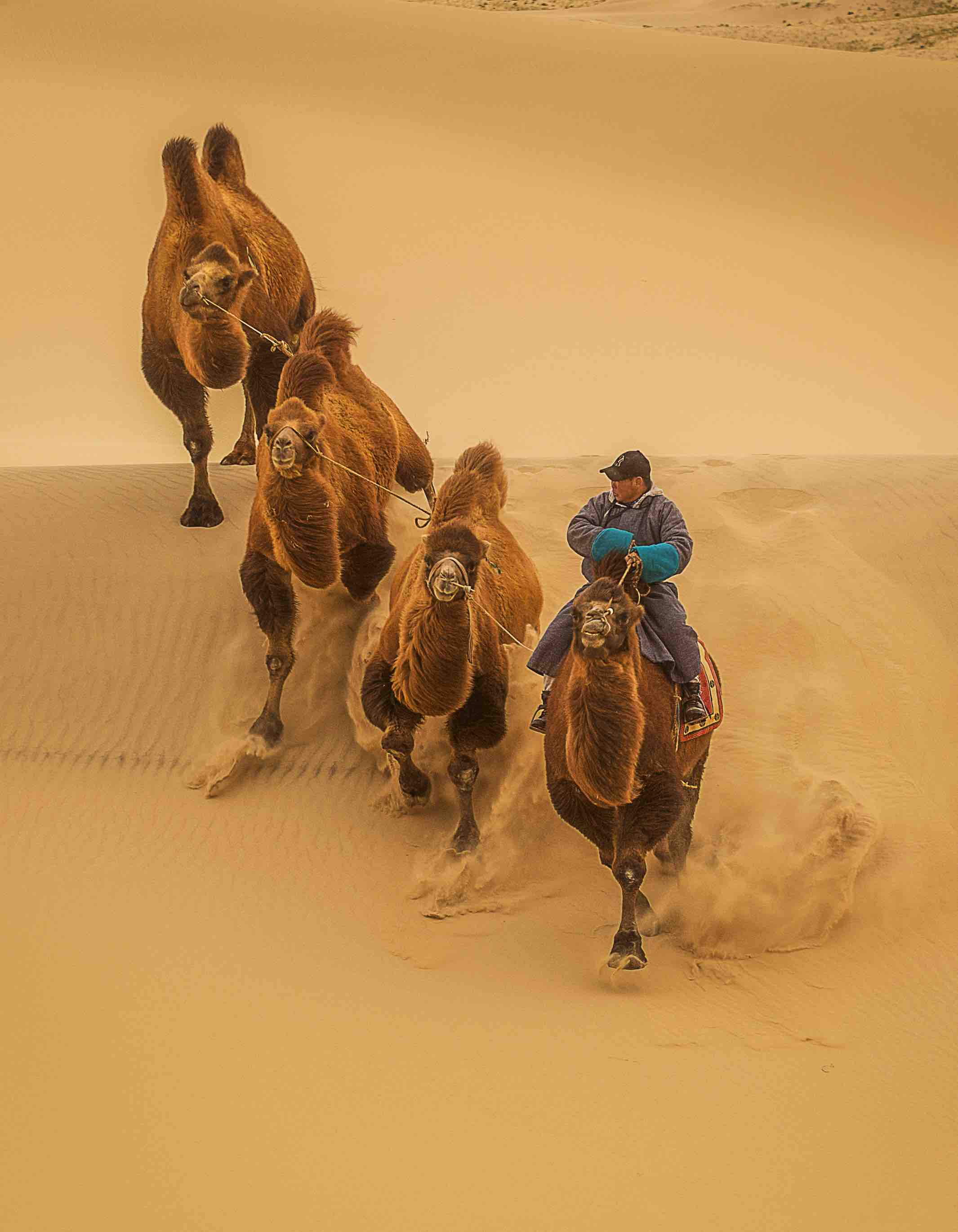
The people living in the Gobi desert are almost exclusively Khalkha people with very few Kazakh descendant living in the western part while some Buriat people occupying the eastern part of the Gobi. Gobi residents are dependent on nomadic cattle and camel herding due the fact that the harsh environment of the Gobi desert prevents other forms of livelihood. This area is one of the few places in the world that kept its culture and traditions from the ancient time the reason being the landlocked position, harsh conditions and geographical difficulties.
Request A Car Rental
Travelling to Mongolia and need a car rental plus extra equipments?


